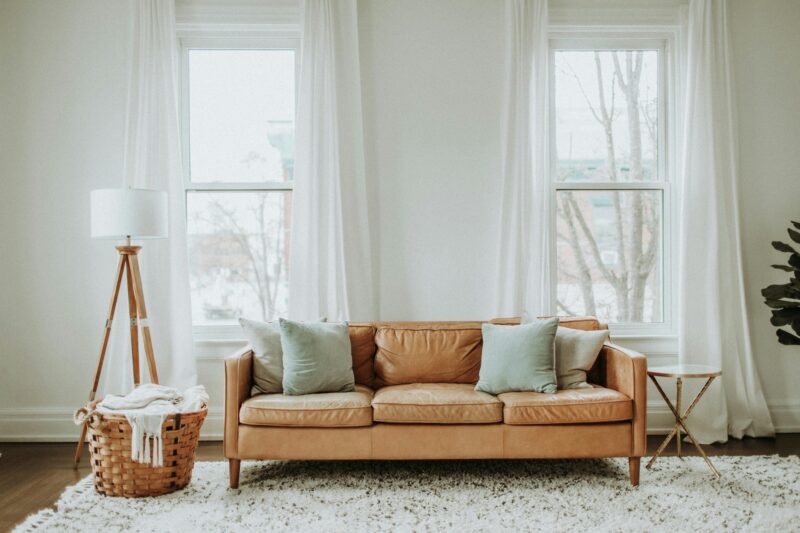There’s something natural, something cyclical, about the rhythm of the seasons that breeds a hunger for something new, and a house which responds in kind simply feels more alive. There’s no need for an unlimited budget or designers on speed dial in order to make significant shifts, though: tiny, well-thought out details can alter the atmosphere of a room without taking so much as a single wall down. Here are some easy ways to refresh your living space:
Seasonal Replacement of Textiles
Textiles carry so much emotional content within a home. A heavy wool throw in the middle of August is hot and stifling, while the same throw in December is comfortable and reassuring. Changing fabrics is arguably the most expedient way of letting a room breathe in the course of the seasons.
In spring, linen or cotton in a crisp style will look lovely on cushions, curtains, and bedding. A lightweight bedcover will instantly make the room brighter and more energized. In fall and winter, look to velvet or heavy knit and provide rooms with warmth and luxury. Here, the key is not to totally redecorate all at once but retain a small rotation in reserve. House heavier items off-season in ventilated bags and then exchange them back again after the cold sets back in.
It’s a luxurious kind of rhythm, but never done to excess. Your sofa will look renewed by the simple fact that you’ve varied the texture of the cushions and throws that you’re sitting on.
Rethinking Colour for Subtle Shifts
Colour is enormously powerful in the room atmosphere. Even small adjustments can turn the whole ambience around. There’s no need to repaint the walls every few months, but try changing the accoutrements. A pastel-coloured vase looks beautiful in spring, while amber glass or a smattering of burnished metal is seasonal for autumn. A fast, hassle-free way of keeping things new is to keep the walls a quiet colour and large furniture items, then rotate the accessories.
Lampshades, picture frames, or even tablecloths can be changed over the course of the seasons. Something so straightforward as moving pale linen napkins around and putting deep, bold colours on in the evening at dinner time can completely change the atmosphere instantly. The idea is, of course, for colours to flow naturally over the course of the year, not so the house looks set up for a shop display room, but rather slowly come into its own in a comfortable, effortless kind of way.
With Lighting
Lighting is so regularly overlooked. During summer, natural light is the key, so light curtains will diffuse it without overwhelming it. When the days draw in, layering up different sources of light does the job. Fairy lights are no longer just for parties. A string around the mirror or across the mantelpiece adds a soft ambiance. During darker months, floor lights with hot bulbs give you a sense of warmth, and come summer, cool-toned bulbs keep things always looking cool and new.
Nature’s Influence Indoors
Including elements of the outdoors instantly ties the house and time of year together. Spring may require tulips or daffodils, while autumn produces twiggy sticks of fire-leaved trees. During wintertime, a bowl of pinecones looks beautiful at home. There’s no need at all to be a gardener or flower arranger, though. Just taking a short walk will get the ideas flowing, whether it’s an armful of daisies in a jar or sprigs of evergreen in a vase.
Floor-Level Refreshes
Floors have more aesthetic influence than we give them credit for. They give a room’s foundation, and no matter if the furniture is beautiful, it will get lost if you don’t get the bottom right. One of the quickest and most efficient seasonal exchanges is thinking through what’s underfoot.
A sisal or jute area rug will be cool and natural in summer, but a shag or wool rug will cozy things up come wintertime. If you’re after a room with a seasonal shift of ambiance, try layering different textures. It doesn’t have to be radical; sometimes putting a small accent over something neutral will sufficiently suggest a seasonal shift.
When specifying floor treatments, keep area rugs for the home in mind as something more than functional items. They’re a subtle method of bringing seasonal colour, texture, and warmth through the use of non-permanent structural solutions.
Little Decorative Elements That Speak Volumes
Accessorizing can make a difference. Change framed photos throughout the year, for instance. It’s okay in summer if you use a pale botanical print, but if you use a muted landscape, it works in wintertime. Even moving existing artwork to new walls can revitalize it.
Candles are seasonal too. During summer, you won’t overwhelm the room with fresh or floral scents. Autumn and wintertime demand deeper spice or woody notes, which will give instant atmosphere. Bowls, trays, and even books on display can be updated, too, at the change of season.
Refreshing Without Clutter
It’s difficult to keep up with seasonal updates because you can so easily just keep adding and adding items. Before you know it, you have layers of things and not a great deal of space to breathe. It’s preferable, though, to rotate. If you buy something seasonal, put something else in storage. Then your space always feels fresh, never cluttered.
Sliding wardrobe boxes or bed storage boxes are a sanity saver. Be sure to label them according to the season, so at changeover time you know where to go. It’s a time and habit saver and keeps the home calm instead of topsy-turvy.
Conclusion
One of the benefits of seasonal updates is that they’re so simple. A fabric update, a change of light, or a dose of nature is typically enough to revamp the entire atmosphere of a room. By aligning yourself with the rhythm of the year, you’ll end up with a home that’s alive and responsive. And every season will be a chance to bring a little bit of the outside in. Remember, small, thoughtful steps usually end up having the biggest impact and will help you refresh your living space.








